 Fig. 1
Fig. 1
The doghouse manhole is commonly used to connect a lateral pipeline to an existing pipe in the ground. This type of manhole is widely used in gravity sewers where round structures are common. It is also used in rectangular structures where new equipment (i.e., blow off valves or air release valves) requiring access for maintenance is required by utility companies.
How Does a Doghouse Manhole Work?
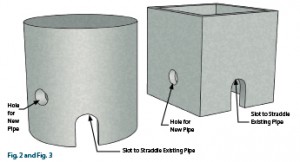 Fig. 2 & 3
Fig. 2 & 3
I. The precast concrete structure is made without a bottom slab with a “U” shaped opening in the walls wherever the existing pipe will pass through. Gasketed holes or plain holes are placed wherever a new pipe will pass through a wall.
Fig. 4
II. The “U” shaped hole needs to be large enough to slide over the existing pipe without damaging it. One rule-of-thumb is to allow 2 in. around the pipe. The distance “d” from the bottom of the pipe to the bottom of the riser depends on jobsite conditions for the project:
Fig. 5
A. d = 0 when a new pipe enters a manhole at an invert elevation higher than the invert of the existing pipe.
Fig. 6 B. d = 6 in. when a new pipe enters the manhole at an invert elevation equal to the invert of the existing pipe. The 6 in. allows room for the gasket stem.
Fig. 7
C. d > 6 in. when structures will be used as an air release valve pit or valve vault and existing pipe must be above the floor.
Fig. 8
III. The doghouse manhole is installed to straddle the existing pipe. Concrete is then poured to form a bottom slab and invert shelf. The existing pipe can then be cut open to gain access and to provide a means for water on the shelf to run into a pipe. New pipes can be installed without interrupting service of the existing pipe.
Gary K. Munkelt, P.E., is a consulting engineer with Gary K. Munkelt & Associates in North Wales, Pa. Contact him at gkm2001@verizon.net.

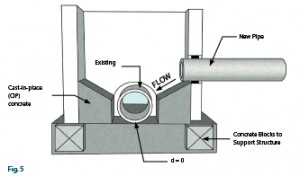
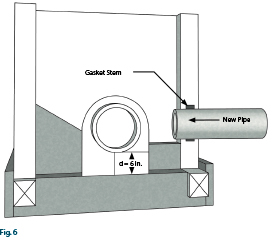
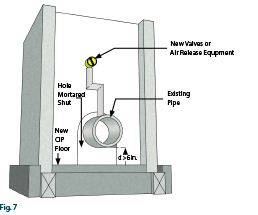
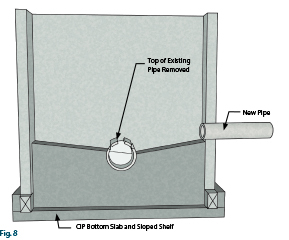
Leave a Reply